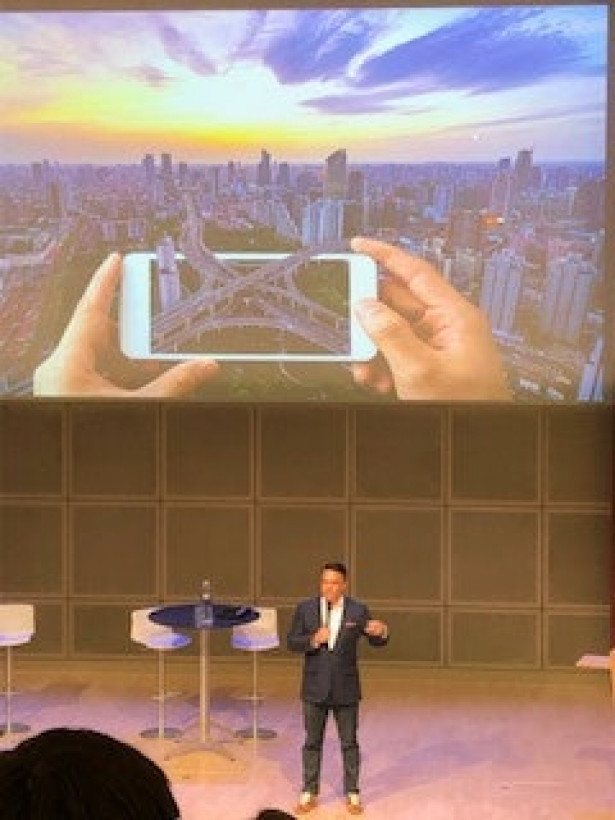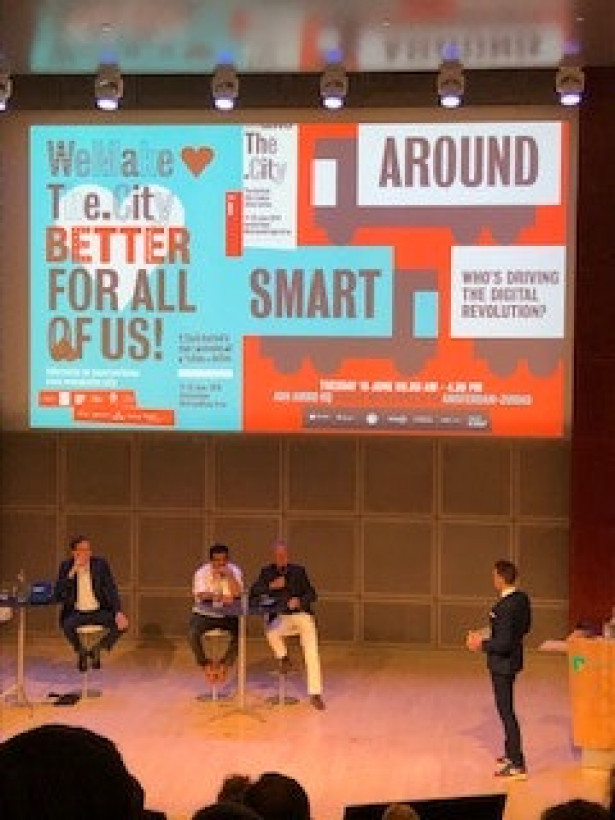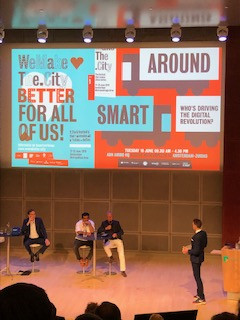Imagine a future Amsterdam where personal combustion engine vehicles are a thing of the past – resigned to an exhibit in the Rijksmuseum. Laugh now, but we may be closer to that possible future than you think. WeMakeThe.City recently held a discussion on the future of travel in and around the center of Amsterdam. The prognosis? Mobility-as-a-Service (MaaS) is a way for the city to manage growth and congestion while improving the quality of life of residents. A recap of the event by our special reporter Derrek Clarke.
MaaS transit consists of both private and public transportation solutions that are consumed as a service through a single interface. Instead of personal vehicles, travellers will have their choice of shared electric cars, bicycles, scooters, trams, trains and ferries – whichever mode of transportation fits their needs.
“Multi-modal (MaaS) transit is the future of urban travel and its coming to Amsterdam.” – Miguel Gamino Jr., Head of Global Cities at Mastercard
Amsterdammers will not be forced to give up their cars immediately, but incentives are already being put in place to drive change. This summer the city has already embarked on a plan to replace around 11,000 streetside vehicle parking spaces in the urban center with more bike racks. In addition, smarter infrastructure management practices have also been piloted around the ArenAPoort area. Here drivers and public transport users are provided with transport information such as wait times, the location of available parking and payment instructions – all of which have led to 75% lower congestion in the area.

Sounds great doesn’t it? Less congestion and traffic frustrations, fewer accidents, lower costs, safer travel. Getting there won’t be easy through. As Robert Jan ter Kuile, the Strategy Officer for GVB states, “This will entail accommodating different travel needs from disparate destinations such as from rural locations to urban locations or vice versa”. This transition will require the formation of more public-private partnerships to be successful. Government agencies will need to partner with fast moving private companies to create the infrastructure to support a MaaS transit vision of the future that finds the right balance between different modes of transportation.
Envisioning Transportation Equality For All
Finding the right balance of technology to support MaaS transportation will not be easy. For example, replacing all personal vehicles or public transportation with ridesharing may create more problems than is solved. As Oded Cats, an Associate Professor at TU Delft and AMS Institute points out, “…with ridesharing, as demand increases travel time will also increase as riders have to wait longer for a car to arrive. This will lead to increased ride cancellations as people become increasingly frustrated with extended waiting times”. However, having more rideshares available will also mean that another, potentially available car will not be far away.
Increasing the number of combustion engine cars constantly roaming around Amsterdam in search of passengers will not help air quality. This is where alternative fuel vehicles such as electric or the often-hyped hydrogen fuelled cars will come into play. To be successful, service providers will need more infrastructure than what is currently provided. The current limited number of EV charging infrastructure for cars and other vehicles is hampering growth in the use of electric vehicles. Charging locations have to be more visible and frequently located to instil confidence in users that if a car is running low you won’t be stranded in the middle of a journey. Hydrogen fuelled cars are still quite far off into the future.
Investing in EV charging infrastructure will also benefit the adoption of electric buses, trams and the transition to more energy efficient buildings. Yes, you read that right, EV charging infrastructure can help make buildings more energy efficient. This is accomplished through the use of bi-directional charging. In this way, the EV charging infrastructure can act as batteries for buildings – feeding electricity back when the price is high and vehicle batteries are already fully charged. Not only will this reduce energy costs, but it will also alleviate pressure on ageing utility grids. This is a step towards being a smart city through smarter infrastructure. As Vivek Makhija, Head of E-Mobility and Advanced Biofuels at Royal Dutch Shell stated, “We will need a mosaic of energy futures moving forward (to transition to a smarter urban future)”.

The Future Is Uncertain Until We Decide To Create It
In the end, it is up to the citizens of Amsterdam to effect change. Some 40 years ago, the people of Amsterdam, neighbourhood by neighbourhood decided to become a more bike centric society. This transition is still happening today. The same effort will be required to transition to a MaaS transit society. To get there though, we will have to answer some tough questions about ourselves. Franka Couzy, Head of Sector Research at ABN AMRO voiced some of these questions such as “Am I ready to give up my car?”, “Is there a good replacement system I can rely upon?”, “Is my expensive parking space going to become a stranded asset?”, and “How much privacy am I willing to give up for personalized transportation services?”.
To be successful, the development of a MaaS transit system is going to require the active participation of private enterprise, government agencies and private citizens working alongside each other. This is the next evolution of the problem of the commons – where we all have to pitch in to protect and support our collective environment. It’s time for change, are you ready?
Text and photos: Derrek Clarke





